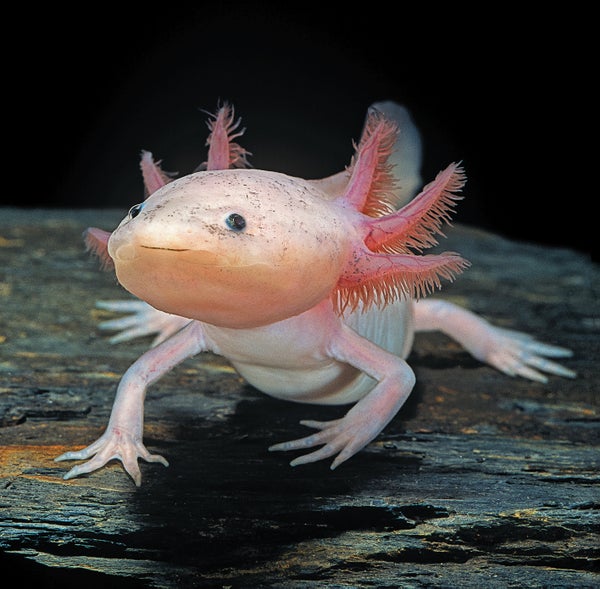In Africa, a species of termite builds columns of mud and spit, sometimes up to 18 feet tall. Paper wasps with brains the size of two grains of sand can recognize the faces of their fellow wasps. On the seafloor, dozens of unique marine bacteria, worms and crustaceans make their homes within rotting bones of dead whales.
Why do animals do such strange things? In this issue, scientists offer answers to this question. They also reveal surprising discoveries about how animals think and feel. And they explain how some of the oddest creatures ever to roam the earth came by their weird traits.
The animal behaviors that seem peculiar to us humans actually make a lot of sense for survival. Take, for instance, those termites. It turns out that their mud house is climate-controlled—the CO2 from the bugs' respiration rises out of the top of the mound, whereas at night the outer chambers of the column let in oxygen to keep the critters from suffocating. Other insects have crueler survival tactics. The female jewel wasp injects venom directly into a cockroach's brain to paralyze it, preserve it and feed it to her unborn spawn.
On supporting science journalism
If you're enjoying this article, consider supporting our award-winning journalism by subscribing. By purchasing a subscription you are helping to ensure the future of impactful stories about the discoveries and ideas shaping our world today.
Humans tend to think that we are unique in our intelligence, social skill and depth of emotion. Yet we think too much of ourselves. The humble chicken, for example, is strikingly clever. Males secretly subvert the pecking order—going behind the back of their more dominant rivals to court females. In the horse world, mares seem to provide the social glue to the herd—a job once attributed to stallions. Some wild animals even show what could be construed as grief: dolphins will carry the body of their dead calves with them, and elephants will revisit the bones of lost herd members for years after they die.
And then there are animals that are simply jaw dropping. The prehistoric bird Pelagornis sandersi, with its 24-foot wingspan—more than twice the wingspan of the albatross—was an unparalleled ocean soarer. And deep in the tunnels of wetlands, a tiny mole with a fleshy, pink nose the shape of a star devours up to five items of prey a second.
Enjoy this tour of the secret lives of animals. My guess is that you will feel somewhat at home, even among the strangest creatures. After all, we are animals, too.
